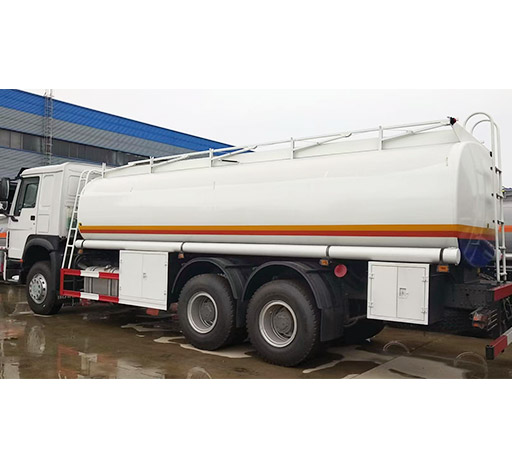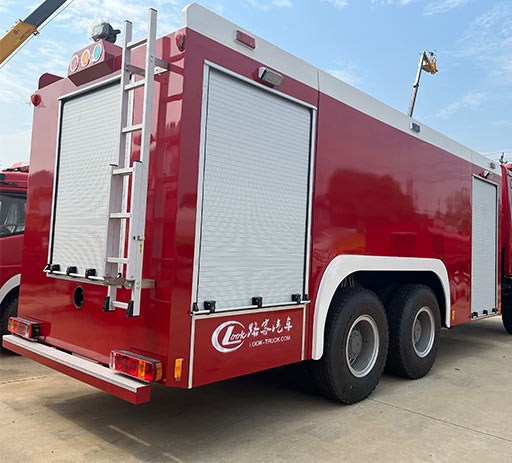Discover the Peterbilt 520 for Sale: A Comprehensive Guide

The Peterbilt 520 stands out as a premier choice for drivers seeking versatility, comfort, and performance in a truck. As demand for this formidable model rises, many buyers find themselves asking: how can I find the best Peterbilt 520 for sale? This article dives deep into everything you need to know, including specs, features, comparisons, and buying tips. Whether you’re a fleet manager or an independent operator, you’ll find valuable insights here to guide your purchase.
Table of Contents
- What is a Peterbilt 520?
- Key Specifications and Features
- Understanding the Peterbilt 520 Models
- Benefits of Owning a Peterbilt 520
- Finding the Best Peterbilt 520 for Sale
- Financing Options for Your Peterbilt 520
- Maintaining Your Peterbilt 520
- Frequently Asked Questions
What is a Peterbilt 520?
The Peterbilt 520 is known for its robust design and wide array of applications. Primarily used for refuse collection, this truck features a set-forward front axle that provides superior maneuverability. Its low cab height makes access easy, while the spacious interior is designed with driver comfort in mind. These trucks are particularly popular for their long-lasting durability, making them a top choice for many professionals in the industry.
Key Specifications and Features
| Specification | Description |
|---|---|
| Length | Approximately 26-36 ft depending on specifications |
| Engine Options | Multiple engine choices including PACCAR MX-11 and MX-13 |
| Transmission | Available in manual or automated options |
| Weight Rating | GVWR options up to 66,000 lbs |
| Fuel Capacity | Varies between 50-150 gallons, depending on model |
Interior Features
The Peterbilt 520 offers a range of interior features designed for the comfort of long-haul drivers. Standout features include ergonomic seats, user-friendly controls, modern infotainment options, and ample storage space for personal items. Moreover, the spacious cabin is designed to minimize driver fatigue during long shifts.
Exterior Features
Built with durability in mind, the truck’s exterior includes a corrosion-resistant finish and a variety of customizable options for body configurations. The durable materials used in construction ensure that the Peterbilt 520 withstands wear and tear, making it a prime candidate for daily operational demands.
Understanding the Peterbilt 520 Models
The Peterbilt 520 is available in multiple configurations tailored to meet different industry requirements. Here’s an overview:
Refuse Collection Model
This model is specifically designed for waste management and features options for front or rear loading. The refuse collection setup includes specialized bodies that enhance operational efficiency.

Utility Model
For utility applications, the Peterbilt 520 can be equipped with service bodies that cater to various industries, from telecommunications to electric services. This flexibility helps companies streamline their operational needs.
Custom Configurations
The versatility of the Peterbilt 520 allows for numerous custom configurations, enabling buyers to tailor their trucks to specific job tasks. Depending on your needs, you can choose from refrigeration units, flatbed setups, or even specialized equipment for different industries.
Benefits of Owning a Peterbilt 520
Reliability
One of the most significant advantages of owning a Peterbilt 520 is its exceptional reliability. Built with high-quality materials and advanced engineering, you can count on this truck to perform under various conditions.
Driver Comfort
The design emphasizes driver comfort, leading to improved productivity and reduced downtime. Modern interiors include ample legroom, easy-to-reach controls, and stable driving performance that keeps fatigue at bay during long hauls.
Fuel Efficiency
With advanced engine options, the Peterbilt 520 offers impressive fuel efficiency. This characteristic is vital for operations that aim to reduce overhead costs while maintaining performance.
Resale Value

Peterbilt trucks are known for their strong resale values. Investing in a Peterbilt 520 can prove economically beneficial, maintaining its worth over the years compared to other brands.

Finding the Best Peterbilt 520 for Sale
Online Marketplaces
Many buyers turn to online platforms to find Peterbilt 520s for sale. Websites like TruckPaper, CommercialTruckTrader, and eBay Motors provide extensive listings. You can filter by model year, specifications, and location to find the best deals.
Dealerships
Visiting local Peterbilt dealerships allows you to browse new and used inventory. Established dealerships often have certified used trucks, which may come with warranties, giving you added peace of mind.
Auctions and Listings
Another avenue to explore is truck auctions. Auctions can sometimes yield excellent deals on Peterbilt 520s. However, it’s crucial to inspect the truck thoroughly before finalizing a purchase.
Financing Options for Your Peterbilt 520
Lease vs. Purchase
Deciding whether to lease or purchase your Peterbilt 520 depends on your financial situation. Leasing often requires a lower initial investment and provides flexibility, while purchasing allows for long-term ownership benefits.
Loans and Financial Institutions
Several banks and financial institutions specialize in commercial vehicle loans. It’s advisable to compare interest rates and terms. Many dealerships also work with lenders to streamline the financing process.
Government Assistance Programs
Look into potential government assistance programs for small businesses and new operators wanting to invest in commercial vehicles. These programs can provide financial assistance that helps ease the purchasing process.
Maintaining Your Peterbilt 520
Regular Inspections
Conducting regular inspections on your Peterbilt 520 can avoid costly repairs later. Check fluid levels, brakes, and tire conditions regularly to ensure all components are in good working order.
Scheduled Maintenance
Follow a maintenance schedule according to the manufacturer’s guidelines. Regular maintenance helps to keep the performance at peak levels and can enhance the lifespan of your truck.
Upgrades and Repairs
Staying updated with the latest technology can increase efficiency and safety. Consider making necessary upgrades or repairs promptly to maintain your truck’s value and performance.
Frequently Asked Questions
1. What is the average price of a Peterbilt 520?
The price can vary significantly based on the year, condition, and features, but typically ranges from $100,000 to $150,000 for new models. Used models may be available for less depending on mileage and wear.
2. What are the engine options for the Peterbilt 520?
The Peterbilt 520 offers several engine choices, including PACCAR MX-11 and MX-13 engines, allowing for varying levels of power and fuel efficiency to suit different needs.
3. Is financing available for purchasing a Peterbilt 520?
Yes, financing options are available through various banks, credit unions, and dealerships. Many financial institutions offer specialized loans tailored to commercial vehicle purchases.
4. What should I look for when buying a used Peterbilt 520?
Inspect the truck’s maintenance records, overall condition, mileage, and check for any signs of wear and tear. It’s advisable to have the vehicle inspected by a professional before finalizing the purchase.
5. How often should I maintain my Peterbilt 520?
Regular maintenance is crucial, usually every 15,000–30,000 miles depending on usage. Follow the manufacturer’s recommendations for specific maintenance intervals to keep your truck in top condition.
6. Can I use a Peterbilt 520 for purposes other than refuse collection?
Absolutely! The Peterbilt 520 is versatile and can be configured for various applications, including utility work, service industries, and more, depending on the body and equipment installed.
